标签:获得 opacity ids 选项 core info 空间 一个 nbsp

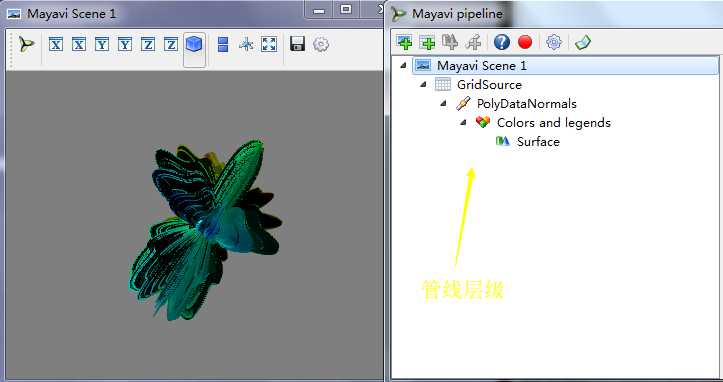
mlab.show_pipeline() #显示管线层级,来打开管线对话框
Mayavi Scene:处于树的最顶层的对象,他表示场景,配置界面中可以设置场景的背景,前景色,场景中的灯光,以及其他一些选项
>>> s = mlab.gcf() #获取当前场景 >>> print(s) #获取当前场景状态 <mayavi.core.scene.Scene object at 0x00000000014E66D0> >>> print(s.scene.background) #输出管线中的背景色 (0.5, 0.5, 0.5)
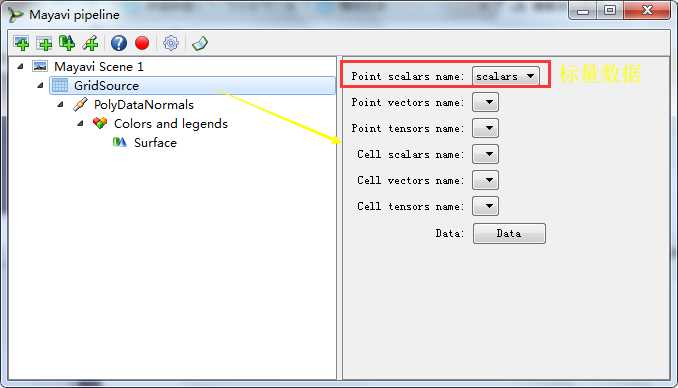
scalars标量数据,他就是传递给mesh的标量数组,他表示mesh表面的每个点的数组
>>> source = s.children[0] #获取GridSource对象,因为scene场景中有多个数据集合sources,我们获取当前唯一的这一个 >>> print(repr(source)) #打印返回的字符串 <mayavi.sources.vtk_data_source.VTKDataSource object at 0x0000000014117570> >>> print(source.name) #返回该节点的名称 GridSource >>> print(repr(source.data.points)) #打印GridSource的坐标(空间坐标,三维) [(0.0, 1.0852211291184772, 0.0), ..., (-0.01969313518771439, -1.5671711510166164 , -0.00024748426251406075)], length = 126504 #length说明坐标数组大小是126504 >>> print(repr(source.data.point_data.scalars)) #打印出每个点对应的标量数组 [0.0, ..., -0.00024748426251406075], length = 126504
>>> manager = source.children[0] >>> print(manager) <mayavi.filters.poly_data_normals.PolyDataNormals object at 0x00000000163D1308>
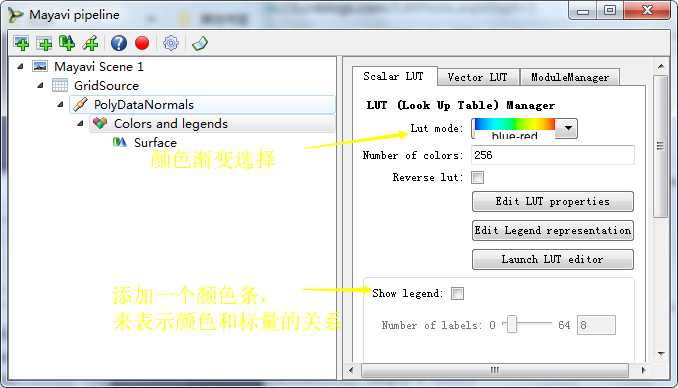
>>> colors = manager.children[0] >>> colors.scalar_lut_manager.lut_mode = "Blues" >>> colors.scalar_lut_manager.show_legend = True
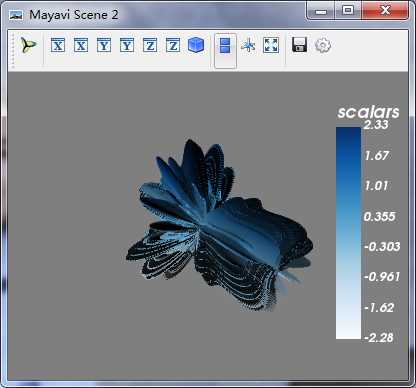
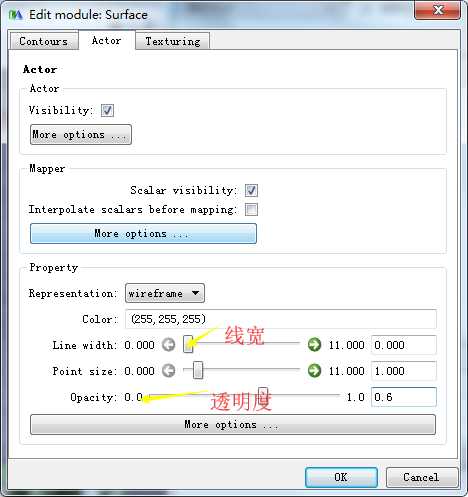
>>> surface = colors.children[0] #获得颜色的第一个子节点 >>> surface.actor.property.representation = "wireframe" >>> surface.actor.property.opacity = 0.6
1.获取场景对象,mlab.gcf() 2.通过children属性,在管线中找到需要修改的对象 3.当其配置窗口由多个选项卡,属性需要一级一级获得
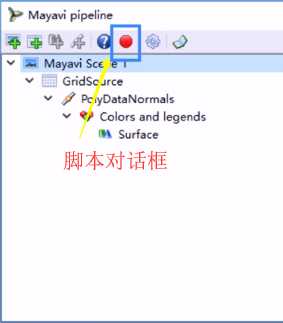
Mayavi管线:是层级管线,相互嵌套,需要使用children获取下一级
TVTK管线:分为可视化管线和图形管线两部分,用于将TVTK中各个对象穿连起来
科学计算三维可视化---Mayavi入门(Mayavi管线)
标签:获得 opacity ids 选项 core info 空间 一个 nbsp
原文地址:https://www.cnblogs.com/ssyfj/p/9302491.html